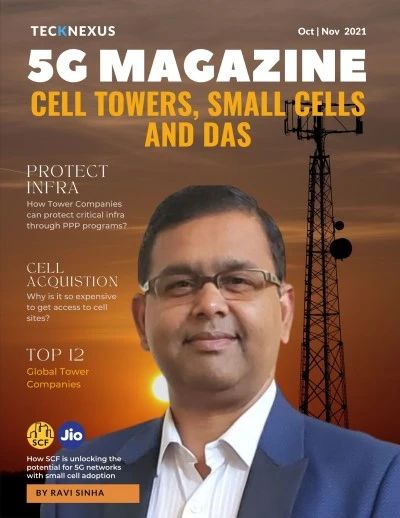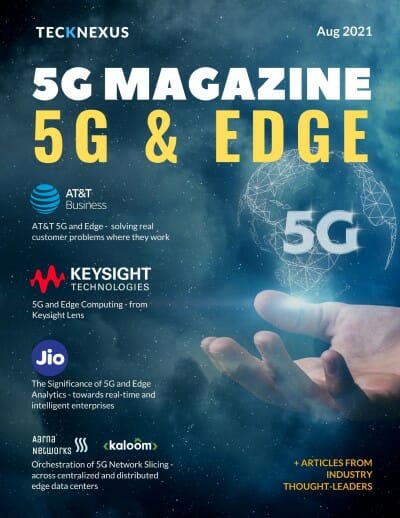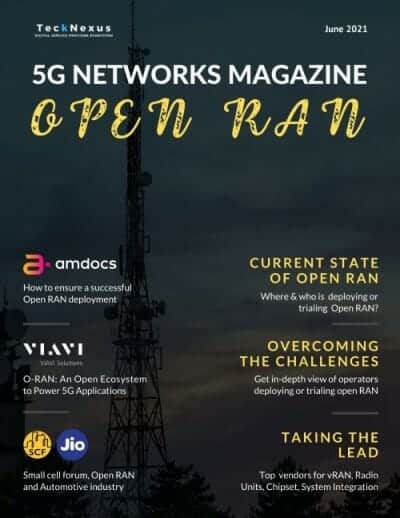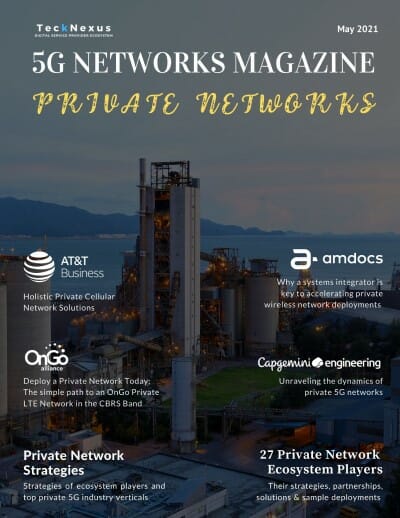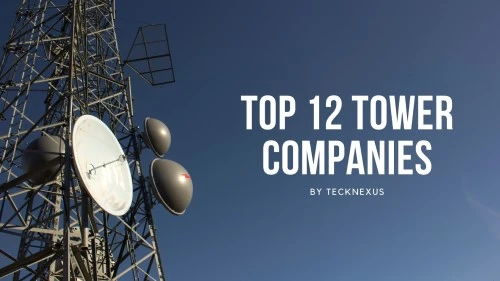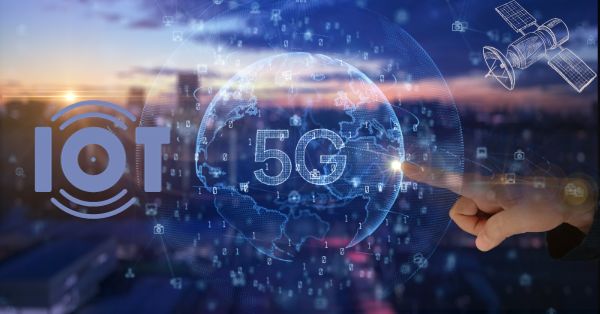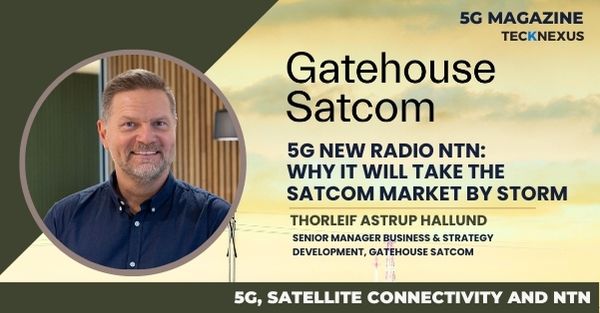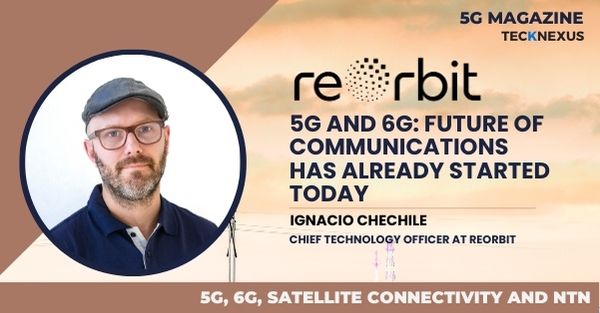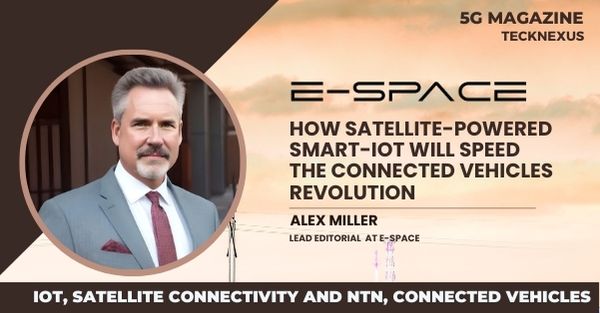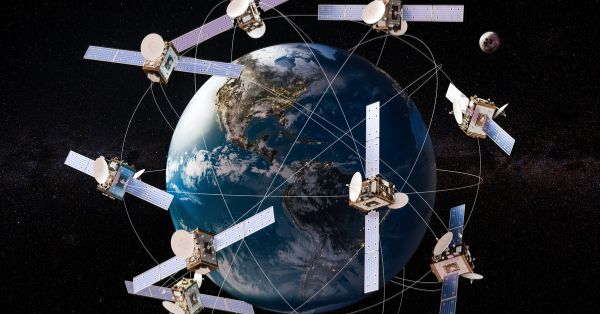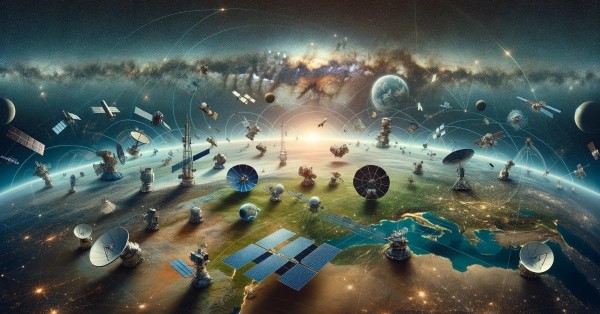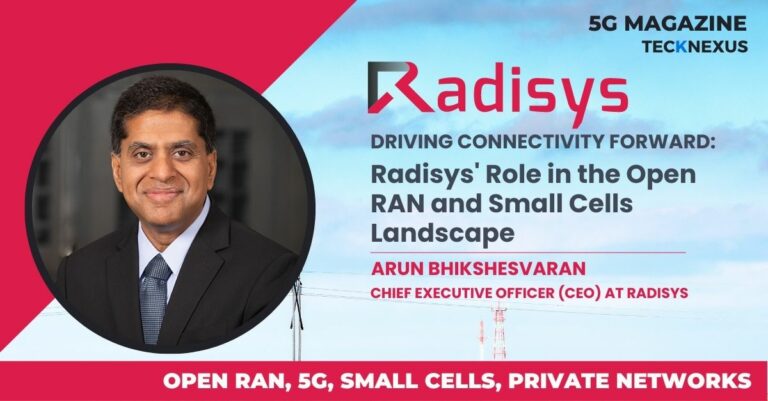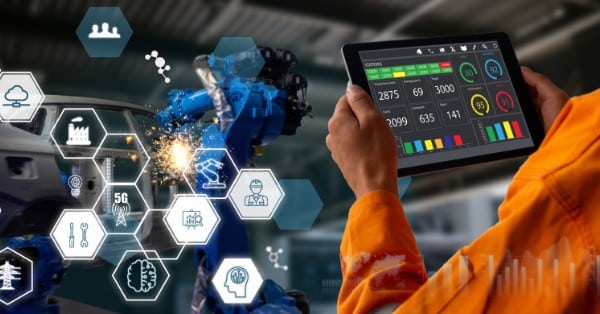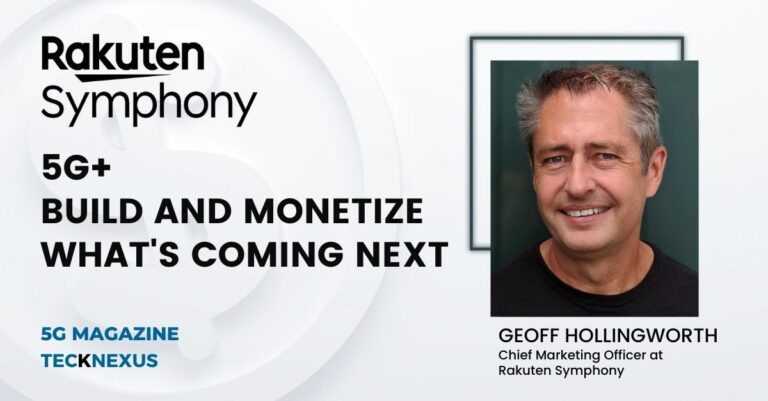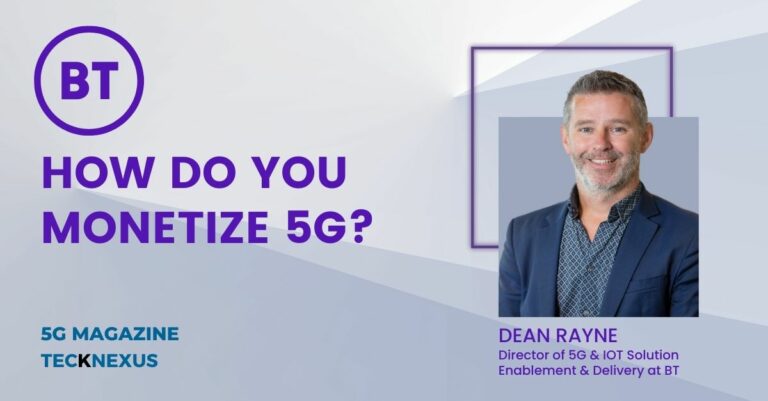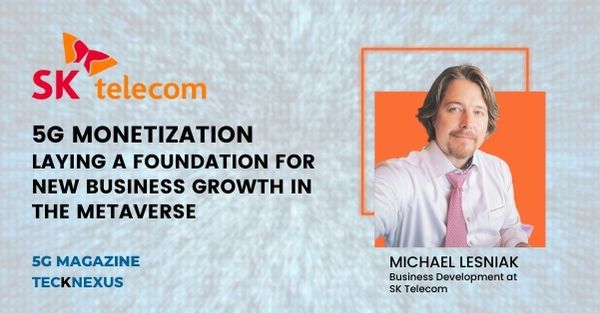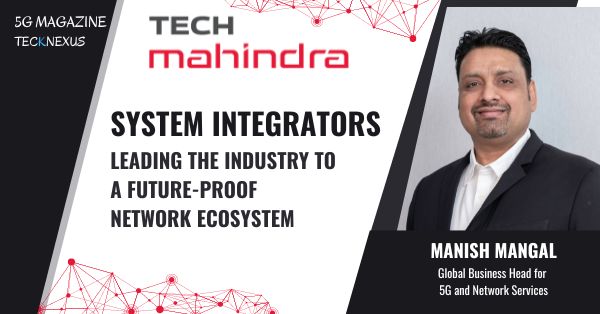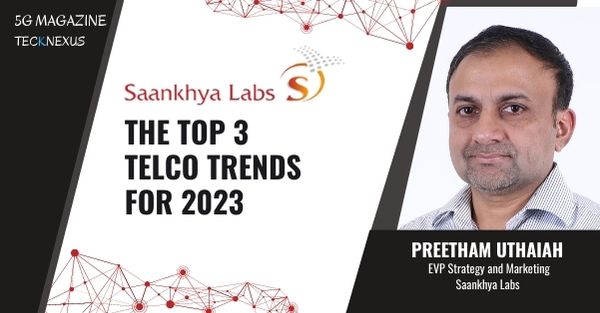Magazines and Articles
- All
- 2022 Predictions
- 2023 Predictions
- 5G and Beyond | 2024
- 5G Edge
- 5G for Manufacturing
- 5G for Transportation
- 5G Monetization
- 5G Towers
- Featured
- Foundation
- Leaders
- Open RAN | 2021
- Open RAN | 2022
- Perspective
- Private Networks | 2021
- Private Networks | 2022
- Private Networks | 2023 Awards
- Satellites and NTN
- Security
- Tech and Connectivity
- TechFusion
- Telco Cloud
Explore the transformative role of 5G in manufacturing, from integration challenges to future trends, and how it’s reshaping industry operations.
Uncover the essentials of private 5G network security. Learn best practices for robust protection and understand key security comparisons.
In “5G Towers: From Basics to the Top 5G Tower Companies Globally,” we take a deep dive into the realm of 5G towers. Uncover what 5G towers are, how 5G towers operate, the types of 5G towers, and discover the top 12 global 5G tower companies. We spotlight their current 5G towers offerings, gauge their support for small cells and DAS solutions in relation to 5G towers, and unravel the strategies these major players are adopting to propel 5G towers infrastructure. Step in for a comprehensive understanding of 5G towers and the companies leading the charge.
Non-Terrestrial Networks (NTN), including satellite and related platforms, amplify the reach of 5G IoT, providing connectivity in remote or disaster-hit areas. With potential applications ranging from remote industrial monitoring to precision farming, the combination of 5G and IoT is ushering in a new era of digital transformation. Yet, challenges like scalability, energy efficiency, and security remain to be addressed, and innovations in edge computing, AI, and advanced communication technologies pave the way forward.
Organizations globally are tapping into the vast potential of the Operational IoT market, from transforming weather monitoring in remote mines to ensuring safe drinking water in African communities. The real game-changer is the integration of reliable, cost-effective satellite connections, predicted to rise to tens of millions by 2030. These connections make it possible to transmit data periodically rather than in real-time, reducing costs and meeting the specific needs of industries like agriculture, shipping, and environmental monitoring. The challenge for Systems Integrators (SIs) is to ensure their Satellite IoT deployments are not only technologically viable but also commercially successful. Ensuring robust satellite coverage, cost-effective deployment, and prolonged battery life are essential to this business case. Forward-thinking SIs have already started their journeys, optimizing Satellite IoT solutions, proving its business worth, and preparing for large-scale deployments.
The emergence of 5G New Radio NTN is set to revolutionize the satellite communication market by bridging the gap between terrestrial and non-terrestrial networks. Offering improved speeds, lower latency, and enhanced reliability, 5G NR unlocks new transformative use cases from smart cities to augmented reality. With 5G NR’s potential to beam signals from space, satellite communication will gain a competitive edge, providing powerful, seamless connectivity globally. Additionally, the unification of 5G standardization for both types of technologies promises heightened interoperability, allowing users to switch between networks effortlessly. This synergy presents a lucrative opportunity for businesses in both sectors, even as technical challenges persist.
The space industry should reach $1 trillion in annual revenue by 2040, according to a report by Citibank analysts. At the same time, a recent report from Inmarsat and Globant estimates the world could reach net zero up to ten years ahead of the 2050 target if industries make the most of existing and emerging space-based satellite technology. Suffice to say, space can offer an array of solutions for sustainability, security and connectivity. Mobile communications have evolved from generation to generation, adding better capabilities, and the trend is far from being over. The sixth generation is already in the making, and the core driving factors for 6G will revolve around enhancing human communication, including immersive experience, telepresence, multimodal collaboration and interaction. 6G will also aim to enhance machine communication, with the focus on autonomous machines and vehicles capable of sensing their surrounding environment in real time (network as a sensor). This article expands on how small satellites will augment the future of communications that starts already today.
Non-Terrestrial Networks will be an integral part of 6G to provide global connectivity with seamless coverage. The initial introduction of NTN in the 5G system is an important step for the establishment of a global standard for integrated scenarios with terrestrial and Non-Terrestrial networks. However, a much more flexible approach to integrate dynamic network elements such as UAVs, (V)LEO satellites and small satellites is required compared to NTN in 5G.
The rise of smart vehicles, projected to surpass 470 million connected cars by 2025, is rapidly transforming the transportation landscape. Enabled by IoT, these vehicles offer real-time communication with infrastructure, on-the-go diagnostics, and advanced safety features. Yet, challenges like patchy cellular network coverage persist. From facilitating autonomous driving and vehicle-to-vehicle communication to enhancing safety and sustainability, satellite-powered IoT is set to accelerate the connected vehicles revolution, optimizing transportation efficiency and environmental impact.
The mobile phone industry is undergoing a transformation, with emerging technology enabling direct communication between standard mobile phones and satellites. With regulatory changes, international partnerships, and new technological standards, mobile devices will soon boast enhanced satellite connectivity. Companies like SpaceX and Apple are diving deep into the race to provide extensive satellite communication, partnering with T-Mobile and Globalstar, respectively. As the competition intensifies, companies are pushed to innovate or risk becoming obsolete.
The age of connectivity we live in is marked by an explosion in smart devices and data consumption, underpinned by rapid urbanization and technological innovations. This necessitates superior communication infrastructure, especially with the rise of 4K/8K video streaming, online gaming, VR/AR, and shifts in work culture prompted by COVID-19. Despite 4G/LTE networks serving us till now, they lack in terms of speed and latency for present needs. Ensuring low-latency is paramount for real-time communications, particularly in sectors like autonomous vehicles, healthcare, and finance. Integrating terrestrial networks (like 5G) with non-terrestrial networks (like satellites) presents a solution, but is challenged by technical, regulatory, and economic factors. Future advancements in satellite communication, including improved payloads and next-gen constellations, look promising. The synergy between 5G and satellite networks will shape the future of global connectivity.
Satellite constellations are advanced networks of strategically placed satellites designed to offer extensive global coverage, overcoming the limitations of single satellite systems. They’re pivotal in global communications, particularly in the era of 5G, enabling high-speed, low-latency connections. Different constellations operate at varying altitudes – Geostationary Earth Orbit (GEO), Medium Earth Orbit (MEO), and Low Earth Orbit (LEO) – each with unique benefits and challenges. As 5G emerges, these constellations will not only provide ultra-fast connectivity but will also bridge the digital divide, ensuring all corners of the world have access. Companies like SpaceX’s Starlink and Amazon’s Project Kuiper are pioneering efforts in this realm. However, while the opportunities are vast, challenges like interference management, space debris, and regulatory hurdles remain.
The emergence of 5G Non-Terrestrial Networks (NTN) presents a revolutionary step in global digital connectivity, but it brings with it intricate regulatory and policy challenges. These directives play a pivotal role, influencing the design, services, and the very integrity of these networks. Key issues range from spectrum allocation and licensing to operational standards and the potential cyber threats these networks might face. Given the global nature of 5G NTN, coordinating regulations across international boundaries becomes paramount, as does addressing the growing concerns of space debris. Moreover, with the vast amount of data these networks handle, policies ensuring data privacy and cybersecurity are of utmost importance. Ultimately, understanding and navigating this complex regulatory landscape is crucial for the successful deployment and operation of 5G NTN.
5G Non-Terrestrial Networks (NTN) promise a new horizon in global communication with high-speed, low-latency features. Yet, as they usher in this new era, they also introduce significant security and privacy challenges. Key vulnerabilities, such as signal jamming, spoofing, and eavesdropping, pose risks to data integrity and user privacy. Addressing these threats demands a layered approach, utilizing advanced cryptographic methods, intrusion detection systems, and innovative AI/ML techniques. As we navigate the future of 5G NTN, it’s crucial to prioritize user security and privacy, balancing the immense potential of these networks with the inherent risks they present.
From SpaceX’s Starlink providing unprecedented internet access, to the synergistic fusion of Eutelsat and OneWeb, and the ambitious visions of Amazon’s Project Kuiper, each initiative is redefining what is possible in global connectivity. Companies like SES, Viasat, Intelsat, Telesat, and Iridium continue to push the boundaries of satellite communication, while EchoStar and Boeing Satellites exemplify the fusion of legacy and innovation.
Discover the pivotal role of Fixed-Wireless Access (FWA) in the expansion of 5G technology. This article sheds light on FWA’s contribution to enhancing broadband reach and capabilities, highlighting its rapid deployment and affordability.
Metaverse has been gaining traction in recent years, and it’s becoming increasingly important for businesses to be aware of. But what is the Metaverse? In this blog post, we’ll take a deep dive into this concept and explore its history and how it is evolving with related technologies. We’ll also discuss Metaverse challenges.
Explore the world of 5G technology: its evolution, benefits, use-cases, and challenges. Dive deep into how 5G is reshaping the future of communication, industries, and daily life.
Discover how Radisys Corporation is shaping the future of Open RAN and 5G technologies. Embracing change and spurring innovation, Radisys is accelerating the deployment of flexible and integrated solutions, pioneering a new era in wireless communication. Learn how they are extending network coverage, deploying private 5G use cases, and championing energy efficiency. Explore Radisys’ strategic focus areas in partner collaboration and their extensive collaborations within the 5G ecosystem in our comprehensive article.
Discover how the Telecom Infra Project (TIP) is leading the Open RAN revolution by accelerating the commercial adoption of secure, high-performance network solutions. Tackling challenges in Open RAN adoption and catalyzing industry effort, TIP’s project groups, badging processes, and marketplace initiatives are reshaping the future of Open RAN and 5G technology.
In the rapidly advancing world of 5G, small cell networks are leading the charge toward the growth of Open RAN. The small cell ecosystem has always been a champion of innovation, allowing new and established vendors to coexist. Now, organizations like the SCF and O-RAN Alliance are working together to face the challenges of creating a RAN that is not only multivendor but, in many instances, virtualized. By leveraging the lessons learned from early experiences of open networking, these organizations are creating blueprints to help mitigate risks for early adopters. As per SCF’s latest forecast, open vRAN architectures are set to account for over half of the small cell installed base by 2028, signifying a monumental shift in the industry.
We are witnessing a paradigm shift in telecommunications. Open RAN is at the forefront, emphasizing a disaggregated and open approach to network architecture. This change has the potential to redefine global communication networks by enabling interoperability, fostering innovation, and democratizing access to advanced 5G technology. However, international cooperation on the Open RAN policy is vital to harness its potential fully. Governments worldwide must embrace pro-Open RAN policies, unlock funding, and encourage cross-border investments. Join Open RAN Policy Coalition in this revolution to enhance connectivity, narrow the digital divide, and promote socio-economic development worldwide.
Welcome to the era of 5G revolution with the CAMARA Project. This initiative exposes telco network capabilities via APIs, simplifying network complexity and providing benefits across telco operators and countries. It’s transforming the very fabric of telecom networks into robust service platforms, opening the door for enhanced service capabilities and fresh revenue streams for telecom providers. Dive into this article to learn about the CAMARA Project’s journey, its approach towards standardization and simplification, and its vision for the future. Explore now!
In this article, we delve into the transformative potential of 5G in the Spatial Web era. With fascinating insights into the convergence of 5G, AI, AR, VR, and NFTs, we illuminate how these technologies are reshaping the retail industry and consumer engagement at large. As the global Spatial Web market surges towards an estimated value of $30.7 billion by 2025, we dissect the pivotal role of 5G and telcos in meeting the heightened demands of this digital revolution. Explore this riveting piece for a deep understanding of the future of consumer interaction in the evolving Spatial Web landscape.
With AI and edge computing, the telecommunications industry is entering a new era of innovation. This in-depth article explores the synergies of Generative AI, edge computing, and OSS/BSS platforms in reshaping the future of telecom operations. From improved operational efficiency to real-time customer support, the possibilities are astounding. Take a journey into the future of telecommunications with us!
This comprehensive blog post delves into how private wireless networks are the catalyst for innovative change across diverse industries. From manufacturing to aerospace, it unravels the potential of private networks in enhancing operational efficiency, driving innovation, and paving the way for future advancements.
This blog post presents a comprehensive comparative analysis of private and public wireless networks – pros and cons, exploring security, control, customization, network performance, cost, maintenance effort, coverage, and ease of deployment. This insights will assist you in making informed decisions regarding the most suitable network option for your specific needs.
“The Evolution of Private Wireless Networks: An In-depth Exploration into the Past, Present, and Future” offers a comprehensive exploration of private wireless networks. The article traces their development from proprietary technologies to LTE and 5G, while also forecasting their future influenced by emerging technologies and regulatory changes. A concise guide to understanding the past, present, and potential future of these pivotal communication systems.
- 5G, AI, Automation
The article explores how the combination of 5G, AI, and automation changes the job market and creates new opportunities for workers and employers. It highlights the importance of 5G for remote workers, the role of AI in automating routine tasks and providing insights, and the impact of automation on the job market. The article also discusses the need for workers and employers to stay ahead of these changes by acquiring new skills and preparing for the jobs of the future.
- 5G, API, AR, Automation, VR
The article explores the transformative impacts of 5G networks and augmented reality (AR) / virtual reality (VR) on consumer interactions, shopping habits, and entertainment preferences. These technologies enhance the user experience with real-time, immersive applications, consequently reshaping purchasing decisions and engagement with brands. Industries like retail and entertainment have embraced this shift, offering immersive and interactive experiences like virtual try-ons and immersive gaming. Moreover, sectors such as healthcare and education have harnessed these technologies to increase accessibility and improve service delivery. However, the article also highlights challenges such as privacy, security, and the potential digital divide. It emphasizes the importance of inclusive technologies and services, as well as the ethical use of these technologies, advocating for industry standards and best practices to ensure equitable benefits and minimize negative impacts.
The article explores how 5G, AI, and AR/VR are transforming a range of vertical industries, including manufacturing, transportation, energy and utilities, healthcare, education, retail, mining, agriculture/agritech, and smart cities. It highlights the benefits of these technologies, including increased efficiency and productivity, improved customer satisfaction, and new opportunities for growth. The article also discusses the challenges associated with these technologies, including privacy and security concerns and accessibility issues. The article concludes by emphasizing the importance of inclusive technologies and services, and the responsible and ethical use of these technologies, in order to ensure that the benefits of 5G, AI, and AR/VR are accessible to all and used for the betterment of society.
- 5G, AI, Automation, Edge/MEC, IoT, Network Slicing, Private Networks
- Aerospace and Defense, Agriculture, Education, Energy & Utilities, Financials, HealthCare, Industrial Automation, Innovation Hub, Manufacturing, Media and Broadcast, Mining, Ports, Public sector, Retail, Smart Cities, Smart Homes, Sports, Transportation
The private network revolution is transforming how businesses secure their operations and data by leveraging connectivity and emerging technologies. These dedicated private networks offer enhanced security, improved network performance, scalability, better control, and support for edge computing, network slicing, and IoT applications. As a result, businesses can embrace Industry 4.0, leading to increased efficiency and automation. While there are challenges to consider, such as cost, regulatory requirements, and integration with existing infrastructure, businesses are adopting these technologies and securing their future in the digital landscape.
- 5G, API, Automation, Edge/MEC, IoT
Edge computing is a rapidly evolving technology that processes data near its source, enabling faster decision-making, reduced latency, and improved data security. This new technology, coupled with 5G, is unlocking new use cases for IoT applications across various industries, including industrial automation, autonomous vehicles, smart cities, healthcare, retail, and AR/VR. However, businesses must address the challenges and considerations related to infrastructure, security, integration, and talent to implement and benefit from edge computing solutions successfully.
The advent of 5G technology is set to unlock the full potential of the Internet of Things (IoT) by providing the necessary infrastructure to support a vast network of connected devices with ultra-low latency, high bandwidth, and enhanced reliability. This article discusses the impact of 5G on IoT, explores the benefits of 5G-enabled IoT solutions, and highlights innovative use cases across industries. However, businesses must address challenges such as infrastructure investment, security and privacy, interoperability and standardization, and spectrum allocation to implement and benefit from 5G IoT solutions successfully.
The digital twin revolution is changing how businesses optimize their operations by using virtual models to simulate, predict, and enhance real-world processes. Digital twins provide numerous benefits, such as enhanced performance and efficiency, predictive maintenance, improved decision-making, reduced time-to-market, and better collaboration. With use cases across industries like manufacturing, energy and utilities, transportation and logistics, healthcare, and smart cities, digital twin technology is becoming increasingly important for businesses. However, organizations must address challenges related to data quality, integration, security, cost, and expertise to implement and benefit from digital twin technology successfully.
AI-powered platforms like ChatGPT are enabling businesses to streamline operations and improve customer experiences by automating routine tasks, optimizing processes, and extracting valuable insights from data. Applications of ChatGPT include customer support, content generation, personalized marketing, process automation, and natural language processing. Benefits of implementing AI-powered platforms encompass enhanced productivity, cost savings, improved customer experiences, scalability, and data-driven decision-making. However, challenges and considerations in implementing AI-powered platforms involve data privacy and security, integration with existing systems, skill requirements, ethical considerations, and maintenance and continuous improvement. By addressing these challenges, businesses can harness the power of AI-powered automation to drive innovation and enhance customer experiences.
This article discusses the transformative potential of 5G technology in telecommunications and the rise of a 5G marketplace model. It highlights how 5G’s high-speed, low-latency, and reliable capabilities can enhance Internet of Things applications, virtual reality, and mission-critical business communications. The article also explores how communication service providers can leverage 5G to offer value-based pricing and new services through network slicing and multi-access edge computing. The proposed 5G marketplace model allows users to compare and choose from various service offerings, similar to established B2C and B2B marketplaces. However, it also mentions the need for robust infrastructure, complex billing mechanisms, and industry acceptance for the successful implementation of this model.
Operators face billing challenges due to limitations with legacy systems that cannot support intent-based pricing.
Geoff delves into why 5G revenues have failed to meet expectations, what customers and businesses anticipate from network operators and the potential for operators to capitalize on new monetization opportunities.
How to monetize 5G? That is a question that entire telecoms sector is asking, and there isn’t a quick answer – 5G isn’t a one-size-fits-all technology.
Realtime services and applications place new demands on overall network performance and reliability. As a result, mobile operators are under pressure to improve their networks to ensure a high-quality user experience supported by high service availability.
To truly monetize 5G, we need to provide consumers with 1) services they want to use that 2) demonstrate the value of 5G. This is how consumers rationalize the price they pay for accessing our network.
There are specific areas from which telcos will mine the revenue. But the key 5G monetization strategy for telcos would be to invest in all 5G standalone (SA) network aspects. It will bring different ecosystem partners together, help upgrade charging models, strategize usage of telecom APIs, and launch network slices to tap enterprise customer segments. All these would be driven by bringing high-level end-to-end automation and a solid orchestration platform to start services to consumers quickly.
System integrators have a strong role in helping operators and enterprises in planning, building, and managing complex network environments while maximizing performance and minimizing costs by effectively deploying solutions and technologies from diverse ecosystem players. With their deep technical knowledge, competence, and wider industry experience, they can offer tailored solutions that enable the successful deployment of public and private networks and ensure long-term success for those organizations that partner with them.
Like the past two years, 2023 will likely be another year of headwinds and change. While there’s no way to predict what will unfold for telcos, there are a few trends we expect to take root.
While private mobile networks create new security considerations for enterprise security leaders, proactive measures can be taken to mitigate these risks and stay a step ahead. In this article, we provide the following areas to focus on in 2023 as private mobile network security earns a spot on the CISO priority list.
2023 is shaping up to be a challenging year. The ongoing war, energy crisis, rising interest rates, and rampant inflation have created a perfect storm for the telco industry. That said, plenty of exciting developments and changes are on the horizon.
The top 3 telco trends for 2023 – Private Networks, Open RAN and Edge Computing. 5G networks are increasingly becoming software driven. To benefit from the power of 5G in making their operations more automated and efficient, many enterprises have started to roll out private 5G networks. Mobile Network Operators are moving towards virtualized, cloud-optimized Radio Access Network (RAN) architecture. Another dimension to the implementation of virtualized telecom networks is the proliferation of Edge Computing.

















